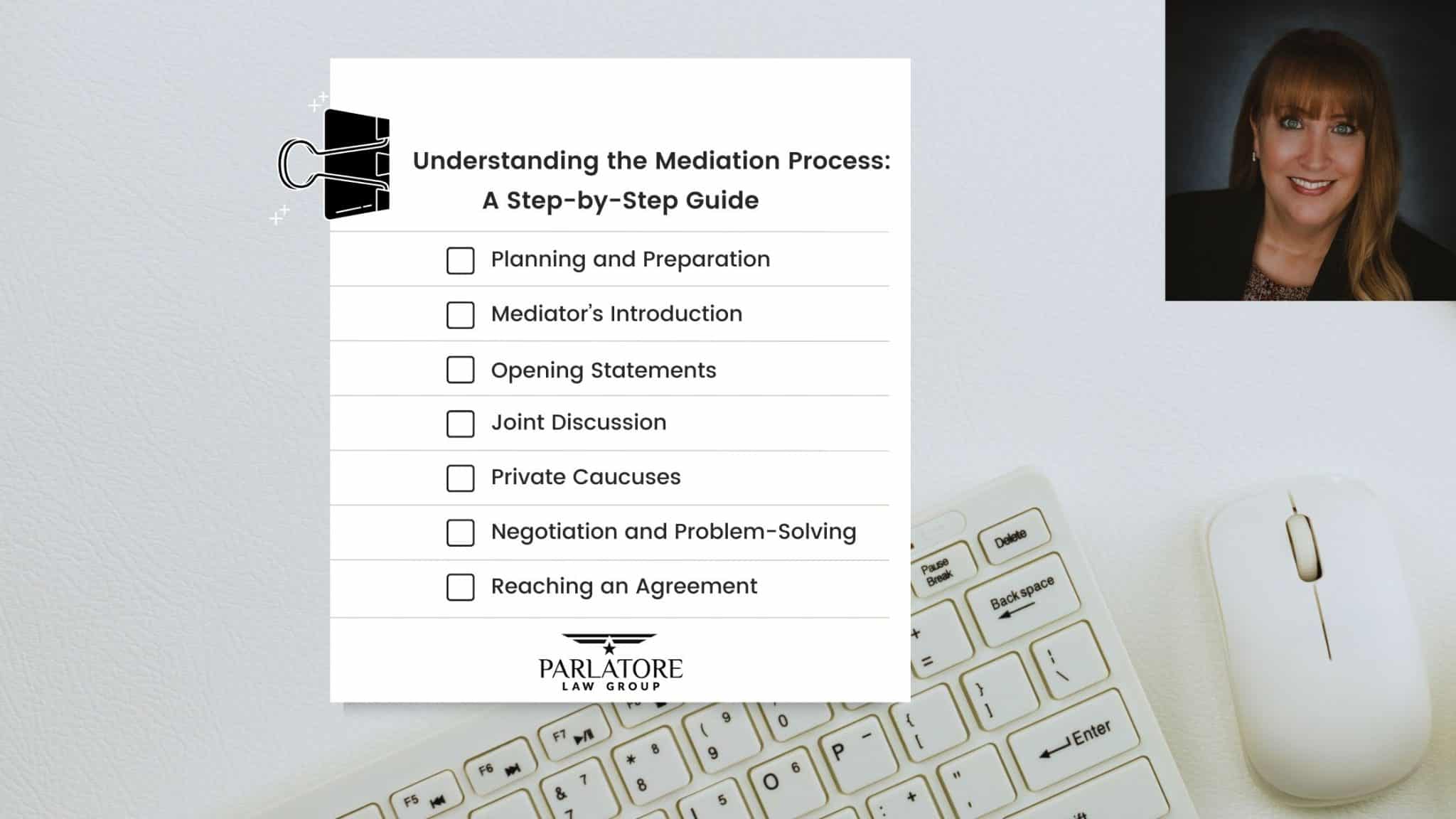Mediation is a popular method of dispute resolution that offers a less formal, more cost-effective alternative to litigation. It involves a neutral third party, known as a mediator, who helps the disputing parties reach a mutually acceptable agreement. The key to successful mediation is that it is a facilitated process where the parties must participate to reach their own agreement. Here, we will explore the key steps involved in the mediation process.
1. Planning and Preparation
Before the mediation session begins, thorough planning and preparation are essential. The mediator works with both parties to decide on logistical details such as the meeting location, the participants, and the schedule. This stage sets the groundwork for a productive session by ensuring that all necessary parties are present and prepared to engage in the process1.
2. Mediator’s Introduction
At the start of the mediation session, the mediator introduces themselves and explains their role as a neutral facilitator in the process. They outline the mediation procedure, establish ground rules, and set the tone for a collaborative and respectful discussion. This introduction helps to build trust and clarify the mediator’s impartial role2.
3. Opening Statements
Following the mediator’s introduction, each party is given the opportunity to present their perspective on the dispute without interruption. This step allows each side to express their views, concerns, and desired outcomes. It also provides the mediator with a clearer understanding of the issues at hand2.
4. Joint Discussion
After the opening statements, the mediator facilitates a joint discussion where both parties can engage directly with each other. This stage is crucial for identifying common ground and understanding the underlying interests and needs of each party. The mediator guides the conversation to ensure it remains constructive and focused on resolving the dispute2.
5. Private Caucuses
In some cases, the mediator may hold private sessions, known as caucuses, with each party separately. These private meetings allow the mediator to explore each party’s position in more detail and discuss potential solutions confidentially. Caucuses can help the mediator identify areas of flexibility and encourage parties to consider alternative perspectives2. Caucus discussion are confidential unless the mediator asks for, and receives, permission to discuss with the other party.
6. Negotiation and Problem-Solving
The core of the mediation process involves negotiation and problem-solving. The mediator assists the parties in brainstorming and evaluating potential solutions. This collaborative approach encourages creative problem-solving and helps the parties develop a mutually acceptable agreement. The mediator’s role is to facilitate communication, manage emotions, and keep the negotiation on track3.
7. Reaching an Agreement
Once the parties have come to a resolution, the mediator helps them draft a written agreement that outlines the terms of the settlement. This agreement is typically reviewed by legal counsel to ensure it is legally binding and enforceable. The final agreement represents a consensus that both parties can accept and adhere to3.
Conclusion
Mediation is a valuable tool for resolving disputes in a way that is efficient, cost-effective, and collaborative. By understanding the steps involved in the mediation process, parties can better prepare for and engage in mediation, increasing the likelihood of a successful outcome.
1: Nolo – Mediation: The Six Stages 2: Program on Negotiation at Harvard Law School – The Mediation Process and Dispute Resolution 3: Mediate.com – How Does The Mediation Process Work?
Contact us today or schedule a consultation to learn more about how we can achieve successful mediation outcomes.

